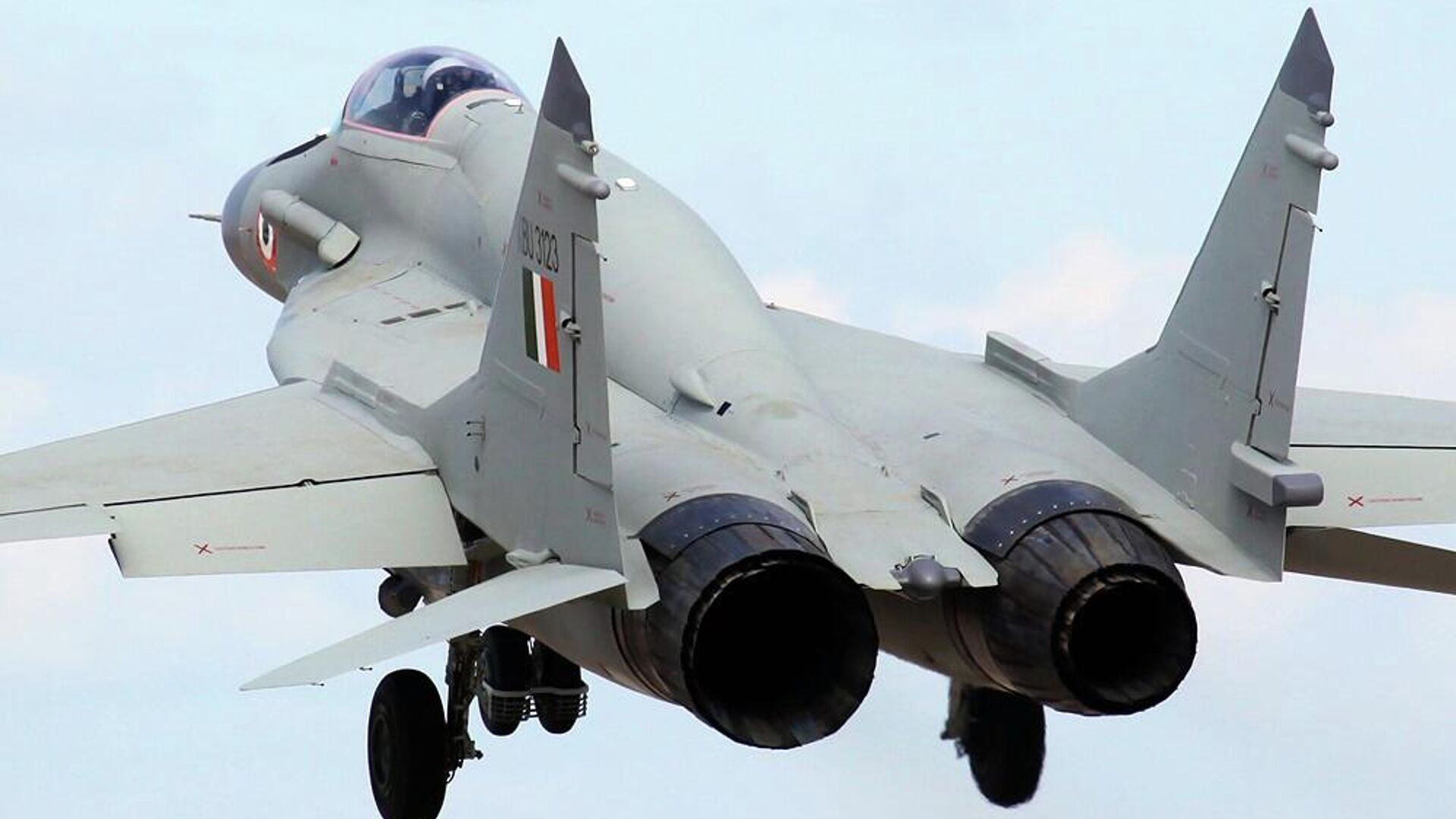https://sputnikglobe.com/20220622/indian-military-seeks-signal-jammers-to-protect-himalayas-from-guided-weapons-drones-1096562282.html
Indian Military Seeks Signal Jammers To Protect Himalayas From Guided Weapons, Drones
Indian Military Seeks Signal Jammers To Protect Himalayas From Guided Weapons, Drones
Sputnik International
Delhi has recently augmented its capacity along the China border, deploying military hardware to the region following a violent clash in the Galwan valley in... 22.06.2022, Sputnik International
2022-06-22T15:17+0000
2022-06-22T15:17+0000
2022-10-19T20:02+0000
china
iaf
indian army
ladakh standoff
electronic warfare system
border dispute
sputnik
https://cdn1.img.sputnikglobe.com/img/07e6/06/16/1096566789_0:47:1000:610_1920x0_80_0_0_08a4a139cee61477f61f1f3ed45787db.jpg
The Indian Air Force (IAF) plans to deploy advanced signal jammers in forward locations along its borders in order to protect military assets from "satellite navigation system receiver-based guided weapons," including missiles and drone attacks.A document shared with manufacturers explains that the IAF seeks a system capable of jamming and spoofing onboard GPS signals, thereby degrading the navigation accuracy of hostile systems."The system design should include modularity for quick deployment/de-induction," the document further adds.The IAF further asked manufacturers to present systems which are fully operational at a height up to a minimum of 5000 meters.Retired Brigadier Rahul Bhonsle, a Delhi-based defence analyst, noted that the desired jammer system is new for the armed forces.The Indian Armed Forces have recently observed increased air space violations by hostile drones, endangering military assets near the border.China has reportedly deployed attack drones and missiles near the Ladakh border. The two countries' armies entangled in a deadly fight in June 2020, in which 20 soldiers from the Indian Armed Forces and four from China’s People's Liberation Army were killed.The border dispute between the two Asian giants has a colonial past, resulting in several clashes in the absence of clear border demarcation of the 3488-km border ranging from Ladakh in the west to Arunachal Pradesh in the east.
china
ladakh standoff
Sputnik International
feedback@sputniknews.com
+74956456601
MIA „Rossiya Segodnya“
2022
Rishikesh Kumar
https://cdn1.img.sputnikglobe.com/img/07e4/08/04/1080055820_0:0:388:389_100x100_80_0_0_40018ee210946d65d49ffba4f4c008e1.jpg
Rishikesh Kumar
https://cdn1.img.sputnikglobe.com/img/07e4/08/04/1080055820_0:0:388:389_100x100_80_0_0_40018ee210946d65d49ffba4f4c008e1.jpg
News
en_EN
Sputnik International
feedback@sputniknews.com
+74956456601
MIA „Rossiya Segodnya“
Sputnik International
feedback@sputniknews.com
+74956456601
MIA „Rossiya Segodnya“
Rishikesh Kumar
https://cdn1.img.sputnikglobe.com/img/07e4/08/04/1080055820_0:0:388:389_100x100_80_0_0_40018ee210946d65d49ffba4f4c008e1.jpg
china, iaf, indian army, ladakh standoff, electronic warfare system, border dispute, sputnik
china, iaf, indian army, ladakh standoff, electronic warfare system, border dispute, sputnik
Indian Military Seeks Signal Jammers To Protect Himalayas From Guided Weapons, Drones
15:17 GMT 22.06.2022 (Updated: 20:02 GMT 19.10.2022) Delhi has recently augmented its capacity along the China border, deploying military hardware to the region following a violent clash in the Galwan valley in June 2020. The two countries continue military and diplomatic talks to withdraw thousands of troops from the Line of Actual Control.
The Indian Air Force (IAF) plans to deploy advanced signal jammers in forward locations along its borders in order to protect military assets from "satellite navigation system receiver-based guided weapons," including missiles and
drone attacks.A document shared with manufacturers explains that the IAF seeks a system capable of jamming and spoofing onboard GPS signals, thereby degrading the navigation accuracy of hostile systems.
"The System should be able to spoof both in space and time domain different SNS Constellations," the document read.
"The system design should include modularity for quick deployment/de-induction," the document further adds.
The IAF further asked manufacturers to present systems which are fully operational at a height up to a minimum of 5000 meters.
Retired Brigadier Rahul Bhonsle, a Delhi-based defence analyst, noted that the desired jammer system is new for the armed forces.
"I don't recall off-hand availability of such equipment with the Indian armed forces. However, the US and Russia have such a capability, and China too. Important that this is deployed in forward areas to avoid any accusations of interference with normal civilian use of GPS," Bhonsle told Sputnik.
The Indian Armed Forces have recently observed increased
air space violations by hostile drones, endangering military assets near the border.
China has reportedly deployed attack drones and missiles near the Ladakh border. The two countries' armies entangled in a deadly fight in June 2020, in which 20 soldiers from the Indian Armed Forces and four from China’s People's Liberation Army were killed.
The border dispute between the two Asian giants has a colonial past, resulting in several clashes in the absence of clear border demarcation of the 3488-km border ranging from Ladakh in the west to Arunachal Pradesh in the east.


